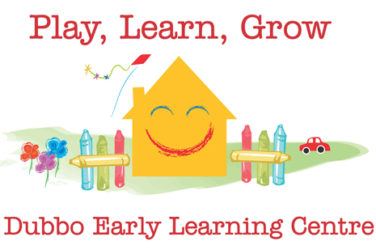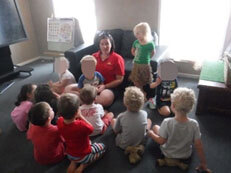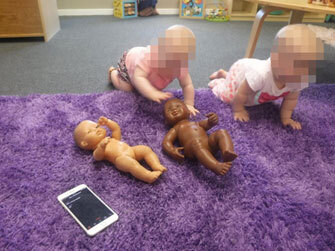Educators, co-ordinators and staff members’ performance is regularly evaluated and individual plans are in place to support learning and development.
All educators learn new professional skills and gain new knowledge by evaluating and critically reflecting on their practice, work with the educational leader to tailor professional development and enhance the process by building community partnerships and learning communities.

What do you do well?
The key aspect of this NQS Element 7.2.3 is to make sure all educators identify what they do well and discover areas of practice they can improve upon.
Identifying what you do well is easy when we look at the children’s documentation and your curriculum planning. For example, when Cody looks at his curriculum planning he can identify physical activity as one of his main strengths- Learning Outcome 3.
Sports with Cody
Cody planned and participated in a football game with the children.
Now ask yourself, how could Cody help other educators in your centre using his strength?
When you identify your strengths through the Learning Outcomes it will also show what you keep away from or areas you could improve. See example below.
| Name | What do you do well? What Learning Outcomes are easy for you to plan and teach? | Who could you teach your strengths to? | In relation to the Learning Outcomes what isn’t Cody’s strength and who could help him improve? |
|---|---|---|---|
| Cody |
|
Cherie in the toddler’s room and Tara in the preschool room. Collectively the team need to identify strengths and areas to improve. | Looking at the Learning Outcomes and documentation Cody will often do craft with the children to extend an idea, when there is a lot more than just craft available. Chelsea could be good at helping Cody extend beyond craft, and Emma could help with science ideas. |
You can build a strong team of educators using this method. Don’t forget educators are great at all types of practice that can be taught to others. For example, Kate is great at making resources and has beautiful interactions with children. Kerrie is great at warm loving interactions. Charlee is great at building trust and communicating with children which results in children following instructions.
Teaching other educators your strengths
Try using this six-step process to create a professional development plan for educators.
Cherie thought it was a great idea for Cody to teach her some physical activities for young children.
| Steps | Process |
|---|---|
| 1. Observing an initial model lesson delivered by Cody | Cherie needed to swap with an educator in the rooms so she could see Cody in action creating ball games with the children. |
| 2. Participating in in-service training as part of a community of learners | Together Cody and Cherie developed a plan for Cherie to try. |
| 3. Co-teaching a lesson | Again, educator room swapping occurred to allow Cody the time with Cherie to co-teach the ball game lesson. |
| 4. Planning a lesson with Cody | Cherie planned her own ball games with Cody. |
| 5. Teaching a lesson while being observed by Cody | Cherie delivered the lesson while Cody watched and took notes. |
| 6. Reflect and evaluate the lesson with Cody | Together Cody and Cherie reflected upon the lesson and made improvements. |
Exceeding theme 3: Families and community connection
Case Study – Professional Development learnt through visiting specialists
Remember to place in your QIP’s strength section how your connection to community professionals have indirectly created professional development opportunities and new learning for you as an educator. Here are some points below to help remind you of the potential professional development opportunities and learning.
Social Worker
- Ways to assist families obtaining support they need in times of divorce, illness and death
Your experience
____________________________________________________________
Diabetes Educator
- How to administer Insulin
- How to tell when a child is experiencing a “low” or “high” and how to respond
- How to take blood sugar readings
- Information on how to prevent type 2 diabetes
Your experience
____________________________________________________________
Occupational Therapist
- How to use visual aids to communicate with non-verbal children
- How to introduce new experiences to children with sensory processing issues by slowly exposing them to new textures and sounds (eg – rolling a spiky ball on a child who doesn’t like to be touched)
- How to provide experiences designed to increase their core strength to help children increase their sense of balance and co-ordination.
Your experience
____________________________________________________________
Speech Therapist
- How to start with simple words and short sentences so children aren’t overwhelmed
- How to help twins with speech issues by encouraging them to talk when away from their twin, as they tend to rely on each other
- How to ask lots of questions about things relevant to the child – interests, family, pets, friends etc.
- How to sound out words and speak clearly and slowly
- How to match words with pictures/visuals
- How to encourage participation in groups by asking for child’s opinion and encouraging children to talk to each other instead of a teacher all the time.
Your experience
____________________________________________________________
Psychologist
- Understanding behaviours
- Understanding triggers for children’s behaviours
- Gaining a better understanding of autism and how to work with children on the spectrum
Your experience
____________________________________________________________
Continence Nurse
- How to support children while maintaining their dignity
- How to identify symptoms that need further investigation by professionals
- How to support families get professional help for their child.
Your experience
____________________________________________________________
















